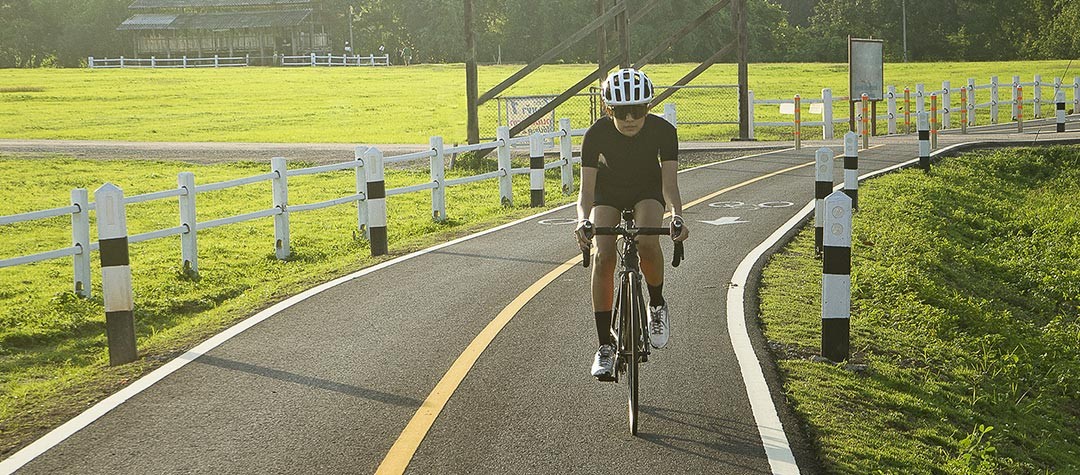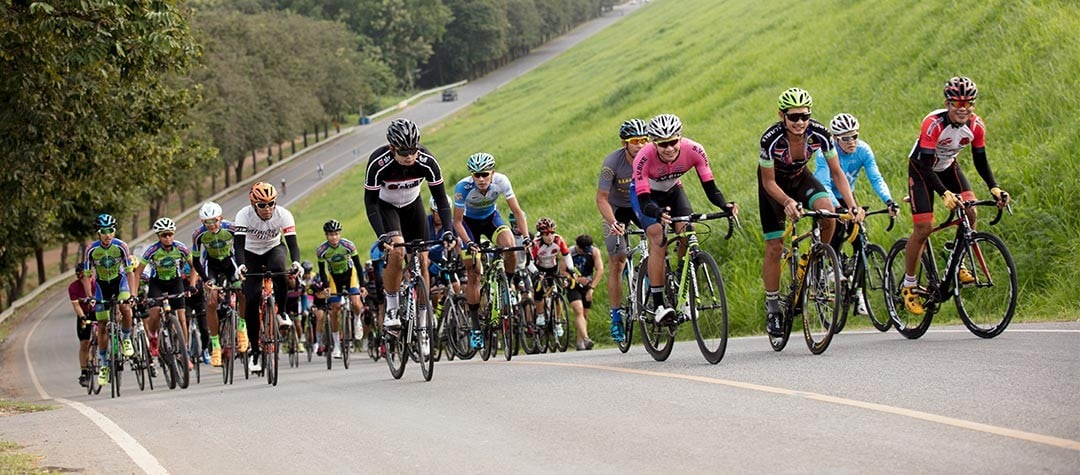If you’re after a road bike then what things do you need to consider? From frames to groupsets, there are a mind-numbing choice of options.
It may be your first road bike, or you may be looking to replace that old trusty bike you’ve had for years. Time and technology move on so what might have been cutting edge years ago may no longer be, so maybe it’s time for a refresh of what you need to think about if you’re thinking of handing over your hard-earned cash for a new bike.
Purpose for your bike
Think about what you intend using the bike for. Are you intending on using it just for a daily commute ? Perhaps you are looking at taking part in sportives or using it for racing, or even triathlons. There are plenty of bikes made specifically for a purpose, from aggressive position racing and time trial bikes to general all-rounders, which put comfort largely over performance. Until you decide what the main purpose for your bike is you won’t be able narrow down the options.
Your bike budget
Think about how much you are willing to spend. Generally, the more you spend the lighter and higher specification the bike will be. Shopping around can make all the difference, especially if you get your purchase at the right time.
Spend as much as you can reasonably afford as it is likely that within a few months you'll end up wishing you'd gone for a slightly more upgraded version...
Spend as much as you can reasonably afford as it likely that within a few months that you’ll end up wishing you’d gone for a slighter more upgraded version of the cycle you bought. Consider too whether the bike you have purchased is upgradeable in any way in the future.
Do your research
Armed with the knowledge or what type of bike you want and your budget, you can start to do some research. Go into a bike shops, ask questions and even sit on a few bikes. Make up a shortlist of bikes and then go away and do your research. Read online reviews and bike forums to get a good idea of feedback from cyclists who have experience of the models you are considering. A good bike is an investment and it's worth spending the time researching and getting a bike that suits you and your purposes for riding.
Frame and fork material
The carbon versus aluminium (and other materials) debate never goes away and it is often down to personal preference. Aluminium, steel and titanium bikes are in the main heavier than carbon bikes, and of course they won’t be used by the pros, but some people will question whether the weight saving is really worth the additional price. Lower end bikes will often be made of aluminium, but as you look at more expensive bikes then you will see some starting to appear with carbon forks and then finally full carbon bikes.
Carbon bikes are said to provide a smoother ride as they better dampen vibration from the road surface, but much depends on the quality of the bike itself rather than just the material. Carbon bikes are also said to be more susceptible to damage than other bikes but of course both can sustain damage. Ultimately it often comes down to which bike is most comfortable for you, and if that happens to be an non-carbon bike then so be it. Often an aluminium bike (with higher grade wheels and components) than a carbon bike of a similar price (but with heavy wheels or a low spec groupset) may make for a better ride than the carbon fibre bike.
Disc brakes or conventional brakes
Disc brakes have traditionally been the preserve of mountain bikers , with road bikes favouring the lighter and more traditional caliper brakes. In more recent years we have started to see more and more manufacturers turning to disc brake for their road bikes. Disc brakes are more hard-wearing and generally more effective, especially in wet conditions. The downside of this is that they are heavier, so you need to weigh up whether your priority is being able to brake effectively or not being slowed down by a slightly heavier bike.
Choose the right size bike
Getting the right size bike is vital. Whether it’s your first bike or not, don’t just take it for granted that all bikes are sized in the same way. Road bike sizes are usually given in centimetres but the way in which frames are measured varies between manufacturers. Some are sized in a different way such as S, M L, XL, but these can vary. Really the only way you can be sure is to get measured in a shop who will be able to recommend sizes for you. Whatever you do, don’t go for a bike that isn’t the right size just because it is a bargain.
Groupsets
Bike component manufacturers group their components into groupsets — collections of brake and gear parts designed to work in harmony. Bike makers will buy entire groupsets from their suppliers to ensure component consistency in their bike builds. There are three main manufacturers of groupsets and bike components - Shimano, Campagnolo and SRAM.
The order of quality for Shimano groupsets, from entry-level to top-end is as follows: Claris, Sora, Tiagra, 105, Ultegra and Dura-Ace. Shimano also currently produces Ultegra and Dura-Ace in electronic versions, denoted by Di2. Campagnolo starts with Veloce, then Athena, Chorus, Record and then finally Super Record. SRAM offers four road groupsets: Apex at the entry level, Rival, Force and Red. Ultimately, pay more and the better performance and shifting you get.
Chainsets
The choice of chainset can also be little confusing as road bikes chainsets are available in a number of different configurations. The most common, and probably the best place to start is with 'compact' double chainset, which has an outer ring being 50-tooth, and a smaller inner ring with 34 teeth to provide a lower, easier bottom gear to make climbing steeper slopes easier.
The most common, and probably the best place to start is with 'compact' double chainset.
Racing cyclists will usually prefer a standard double chainset which consists of two front rings - one large 53-tooth outer and a smaller 39-tooth inner ring which are better suited to the high speeds of racing in a bunch. You can also get a road bike chainset that’s a halfway house between standard and compact, called a pro-compact, which uses a ring combination of 52 and 36.
It's still possible to get triple chainsets (combining a 50-tooth outer ring with a 39-tooth middle, and an inner of 30 teeth) on road bike, although they have mostly been replaced by compacts, which offer nearly the same spread of gears but they're lighter and simpler to use. Triples are good for those who want the very lowest gears, and they're ideal for really steep hills or touring when the bike is laden with extra weight of luggage.
Wheels
The wheels have a massive bearing on how the bike rides, feels and responds. A super expensive and light carbon framed bike matched with heavy wheels will not ride well. If speed is your priority then go for lighter wheels and use faster tyres . If your budget cannot stretch to super light wheels, then remember that you can always upgrade at a later date, although this could well turn out to be quite pricey given that wheels take up a large proportion of a bike’s overall cost.
Where to buy from
While online offers a great opportunity to find bargains when it come to buying a bike, there is no substitute for the one-on-one advice you can get from a local bike shop. Not only can you be properly sized up for a specific bike, rather than relying on guesswork, you’ll also often have the opportunity to give the bike a test ride.
Also think about the after-sales service and warranty on your bike. What hassle would you face if trying to return your bike or get an issue fixed if you’ve bought the bike online? A local retailer may work out more expensive than online, but the price you pay will usually cover the cost of your first service, and the local and personal touch will provide the peace of mind you need when shelling out for what is likely to be an expensive purchase.
Choose when you buy carefully
Unless you are absolutely desperate and need you bike now, it is worth timing your purchase so you get the best bargains out of season. Retailers will offer discounts (sometimes by as much a 40 percent) on bikes which are considered last year’s stock, but quite often the specification of the bike is the same as the new model - it’s just the colour scheme that is different. Just be sure to check out the specifications of the two models to make sure you are not missing out on something that you consider essential.
Is second hand an option?
Buying a bike second hand can be a great option if you are looking for a high spec cycle but don’t have the budget to match. You can often pick up something you wouldn’t ordinarily be able to afford, just because it has been used. Like cars, bikes lose a significant amount of their value once they’ve been used.
Don’t buy a second hand bike unless you have the opportunity to view and try it in person, and if you are not experienced enough, take someone along who can check the bike over for you. Some second hand bikes may at first sight look in good condition but many of the parts may be well worn. Alternatively, you may just strike it lucky and find a bike that was bought with good intentions and has only been ridden once around the park!
Can you winter up you bike?
Depending on your purpose for you bike and whether you are wanting to ride it year-round or for commuting, you may want to consider whether the bike can be ‘wintered-up’ with the addition of mudguards/fenders. Some bikes have eyelets built into the frame where you can attach mudguards, while some other road bikes do not and mudguards can sometime be attached using tie-around clips.
You may also want to think about using thicker tyres in winter, so you need to consider whether the bike has enough clearance to accommodate both thicker tyres and mudguards. Remember that a mudguard-free bike does not make a pleasant riding experience in the wet , but also be mindful that you may not want to leave them on your bike year-round so make sure they are easily removable.
Picture credit: SUSAN LEGGETT / Shutterstock.com














